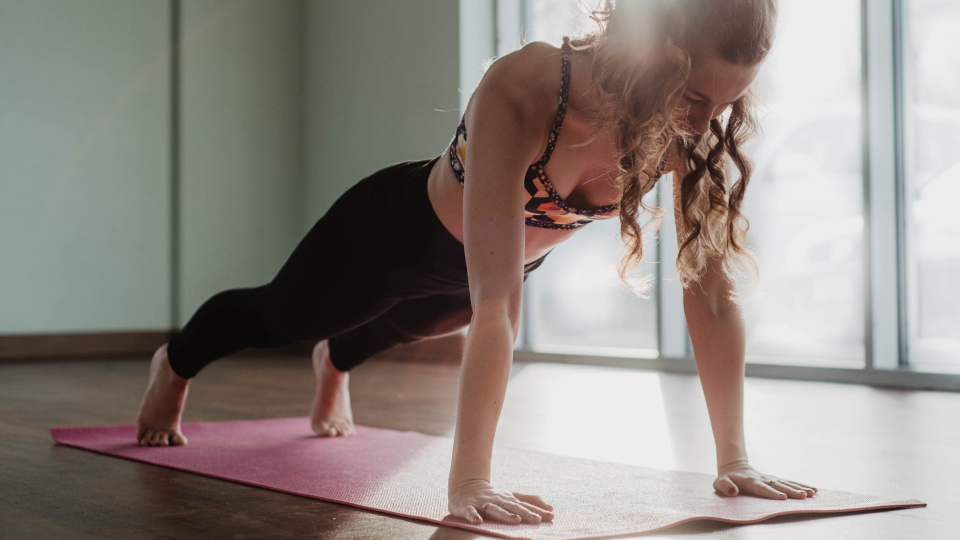Moving less could be the smartest way to lower blood pressure

High blood pressure is a worldwide epidemic, affecting 1.8 billion people globally – and it’s not just older people at risk. Nearly one in four adults between 20 and 44 are suffering. High blood pressure is linked to heart disease as it can damage your arteries, which become less elastic, limiting the flow of blood and oxygen to your heart. Exercise – particularly cardiovascular – is a well-recognized way to alleviate the issue, as it reduces blood vessel stiffness, so blood can flow more easily. However, new research is challenging whether aerobic exercise is actually the best bet. Researchers looked into 270 trials involving nearly 16,000 people, finding isometric exercises are the superior way to lower blood pressure through physical activity. Isometric exercises, such as planks, hovers and wall squats, engage your muscles without movement. The researchers explain that this static contraction squeezes the vessels that supply blood to working muscles, reducing the flow of blood and oxygen supply to the muscle. When you relax and the contraction stops, there is a large flow of blood through the vessels, which is likely to be the trigger for significantly improved blood flow regulation.
The researchers are now calling for a review of government-recommended exercise guidelines, highlighting that isometric exercises seem to be almost twice as effective as the current aerobic-based exercise recommendations for the prevention and treatment of hypertension.
Can you huff and puff and blow away cancer risk – in less than 5 minutes a day?

A team of Australian scientists pinned wearable devices to 22,398 ‘non exercisers’ and tracked their health over seven years. What they found is that any short bursts of activity could have a remarkable impact on cancer risk.
As part of the study, researchers coined the term VILPA, standing for vigorous intermittent lifestyle physical activity. It refers to everyday physical activities that are done in quick bouts with gusto – things that quickly get you huffing and puffing, like housework, carrying groceries or playing with children.
The researchers found that doing just three and a half minutes of VILPA (done in bursts of around one minute each) is linked to an 18% reduction in cancer incidence compared to those who do no vigorous activity. When participants upped their VILPA to four and a half minutes a day it was associated with up to a 32% reduction in the risk of cancers linked to physical activity.
Lead researcher, Professor Emmanuel Stamatakis, of the Charles Perkins Centre, University of Sydney, Australia, says “VILPA is a bit like applying the principles of high-intensity interval training to your everyday life.”
How men can curb the risk of 9 types of cancer

Regular aerobic exercise could be key to evading a raft of different cancers. Swedish scientists followed a million men from the military – spending an average of 33 years looking for links between strength, fitness and their overall health. They found a whopping 84,000 of the men developed cancer at some point in their lives. But it was those with lower cardiovascular fitness who were at greater risk.
Those who had a high level of cardiovascular fitness were:
- 19 per cent less likely to develop head and neck cancer
- 39 per cent less likely to develop cancer of the oesophagus
- 21 per cent less likely to develop stomach cancer
- 40 per cent less likely to have liver cancer
- 18 per cent less likely to develop bowel cancer
- 5 per cent less likely to develop cancer of the rectum
- 20 per cent less likely to develop kidney cancer
- 42 per cent less likely to develop lung cancer
- 12 per cent less likely to develop pancreatic cancer.
Interestingly, higher cardiorespiratory fitness was linked to a slightly increased risk of prostate cancer (which may be skewed by increased screening) and skin cancer (which could be a result of higher UV exposure due to training outside).
Exercise and asthma: What’s the best approach?

There are 339 million people worldwide who experience the coughing, wheezing and shortness of breath that goes hand-in-hand with asthma. For many, engaging in exercise can trigger the symptoms. Now, scientists have unearthed how asthma sufferers can leverage different types of physical activities to enhance respiratory function and overcome their asthma suffering.
The analysis, which spanned 28 randomized controlled trials and involved 2,155 asthma sufferers, explored the effects of breath training, aerobic exercise, yoga, and relaxation on lung function. Different types of training delivered different benefits.
A combination of breathing training, aerobic exercise and yoga seems to be the most advantageous, improving both the Forced Expiratory Volume and Forced Vital Capacity ratio.
The researchers say larger, well-designed randomized controlled trials are now needed to more accurately estimate the benefits of exercise training for individuals with asthma.







